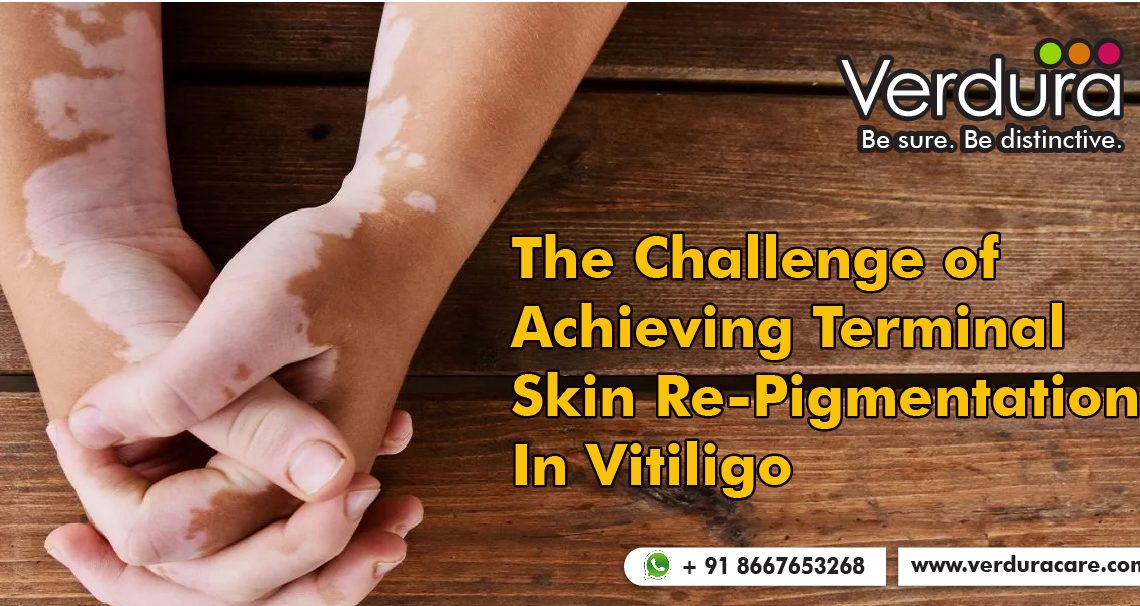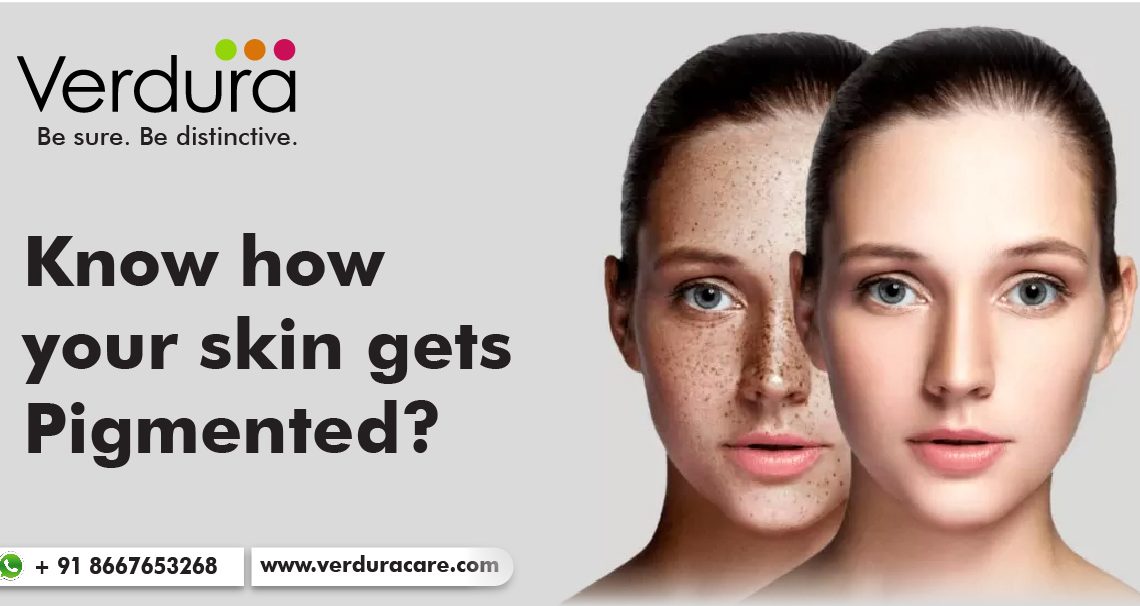Skin repigmentation is a fascinating and intricate process that aims to restore color to areas affected by conditions like vitiligo. While advancements in medical science have made significant strides in treating these conditions, achieving complete and uniform repigmentation remains a challenge. In particular, the terminal ends of skin repigmentation present unique difficulties that require further exploration and understanding. In this blog post, we know the reasons why achieving repigmentation at the terminal ends of the skin can be challenging, shedding light on this complex issue.
Understanding Terminal Skin Re-pigmentation:
Before we explore the challenges associated with terminal skin re-pigmentation, let’s briefly understand the process itself. Repigmentation involves the production of melanin, a pigment responsible for the color of our skin, hair, and eyes. In conditions like vitiligo or scarring melanocytes, the cells responsible for melanin production, are either absent or malfunctioning. The goal of re-pigmentation is to stimulate the melanocytes to restore color to the affected areas.
Challenges at the Terminal Ends:
- Limited Melanocyte Population:
The terminal ends of the skin, such as the fingertips, toes, lips and genital areas, naturally have fewer melanocytes compared to other parts of the body. This limited population of melanocytes makes repigmentation in these areas more challenging.
- Microenvironment Differences:
The microenvironment at the terminal ends of the skin differs from other areas due to factors such as temperature, humidity and exposure to friction. These variations can influence the effectiveness of treatment methods and affect the sustainability of repigmentation.
- Decreased Blood Supply:
The terminal ends of the skin typically have a reduced blood supply compared to other parts of the body. This limited blood flow can hinder the delivery of nutrients and therapeutic agents necessary for melanocyte activation and repigmentation.
- Higher Cell Turnover:
Certain terminal areas, such as the lips and genital regions, experience higher cell turnover rates. This rapid cell renewal can limit the persistence of repigmentation and require ongoing treatment to maintain the desired results.
Overcoming the Challenges:
While achieving complete and uniform repigmentation at the terminal ends of the skin can be difficult there are strategies and treatments that can improve the outcomes:
- Targeted Therapies:
Researchers are exploring innovative approaches, such as localized drug delivery systems and targeted therapies, to enhance repigmentation at the terminal ends. These techniques aim to optimize treatment effectiveness and minimize side effects.
- Combination Treatments:
Combining different treatment modalities, such as topical medications, light therapy, and surgical techniques, can improve the chances of successful repigmentation in terminal areas. Dermatologists and specialists can create personalized treatment plans based on individual needs and goals.
- Ongoing Maintenance:
Repigmentation in terminal areas may require ongoing maintenance to sustain the results. Regular follow-up appointments and adherence to prescribed treatment regimens are crucial to ensure long-term repigmentation success.
Use Verdura mela pro + Verdura mela gain to restore balance and color of your skin
🌟 This combination helps in achieving repigmentation and gives sun protection with the revolutionary combination of Mela Pro and Mela Gain, you can embrace your journey towards repigmentation, regain confidence, and celebrate the beauty of diversity.
In the quest for achieving terminal skin repigmentation, it is important to acknowledge and understand the challenges inherent to these areas. Limited melanocyte population, microenvironment differences, decreased blood supply, and higher cell turnover all contribute to the difficulty of achieving complete repigmentation.
However, through targeted therapies, combination treatments, and ongoing maintenance, dermatologists and patients can work together to optimize outcomes and overcome these challenges.
By further exploring and addressing the complexities surrounding terminal skin repigmentation, we move closer to providing effective and comprehensive solutions for individuals seeking to restore the natural color and confidence in these challenging areas.

